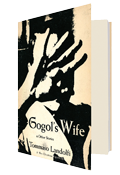What we know about Tommaso Landolfi would barely fill the pages of a hotel-lobby brochure. Briefly, he was: (a) born in Pico, Italy, in 1908 and died in Rome in 1979; (b) addicted to gambling, and a fastidious dandy; (c) compulsively protective of his own obscurity. Landolfi’s stories featured grotesque subjects: an ocean of cockroaches, Gogol’s relationship with a blow-up doll, a woman’s hirsute nipple. He also ferociously mocked critics, literary prizes (of which he was often a recipient), and his own readers. It would not be difficult to confuse his life and fiction with a first-rate Borges plot.
But Landolfi was also a lexicographic genius, beneath whose casually sadistic storytelling lies a lustful fascination with words and the dilemmas they encourage. As it was, he thought that the demotic language proper to his era’s literary establishment had been inundated by the abstruse jargon of theory, dehumanizing communication itself. As Italo Calvino noted, he was aware of the “arbitrariness of linguistic symbols, and most importantly, the nonarbitrariness of language as a system.” Addicted to the roulette wheel, Landolfi saw creativity as a precise, though not more profound, form of gambling. He once mandated that a printer’s error go uncorrected in one of his dialogues, even though the slip made the piece incomprehensible.
In “Dialogue on the Greater Harmonies,” published in 1937, an unsettled student and poet, Y., tells the narrator how he was taught Persian by an English sea captain. After studying the language and composing three poems in it, Y. realizes he’s been conned: the “Persian” he has painstakingly learned is nothing but an imaginary language. Worse still, when confronted, the sailor cannot remember having instructed him. Y. hastily torches his notes and, desperate to discover whether his verses have any artistic worth, goes with the narrator to visit a “great” critic. Their dialogue quickly turns to a deconstruction of creative identity: to the critic, art is relative to the whims of the artist; the narrator and Y. argue that it is an anthropological confluence of history, scholarship, and geography. “Do you mean to say,” Y. asks, “that a poem can be a work of art even if there is only one person in the world, only its author, competent to judge it?”
“Precisely,” the great critic replies.
“Dialogue on the Greater Harmonies” magnifies Landolfi’s preoccupation with the discrepancy between language as a preciously untainted tradition and literature as a worthless enterprise. He was confident that originality was manifested by usurping and updating the works of antecedents—pastiche was his art form—and that art is not a vacuum of personal whims, as the critic maintains, but an infinite regression of borrowing. Art, to Landolfi, produces the artist in the same sense that libraries create the savant.
Toward the conclusion of their discussion, Y. recites one of his nonsense poems, offers a remarkably vapid translation, and renounces the prospect that it has any meaning whatsoever. He promises to return with a better translation, and ends up harassing the critic so much that the critic tosses him down a staircase—”or something of the sort,” the narrator adds in a typical Landolfian ending. Landolfi was a master of the insulting anticlimax, and usually managed to undermine the seriousness of his topics with an almost vaudevillian indifference. But, of course, he never liked readers anyway.
—Michael Peck
Author was educated at: the University of Florence, whence he graduated in 1932 with a degree in Russian literature and a thesis on the poet Anna Akhmatova; Author was briefly affiliated with: a group of writers who aimed to create a new medieval lyricism stripped of all rhetoric; Author was briefly imprisoned by: fascists, for political activities, though records of his imprisonment are contradictory and vague; Author’s appearance was described as: “extraordinarily pale and reserved… a Stavrogin, haughty and haunted”; Author’s real nightmare, according to Italo Calvino: “that nothingness does not exist”





